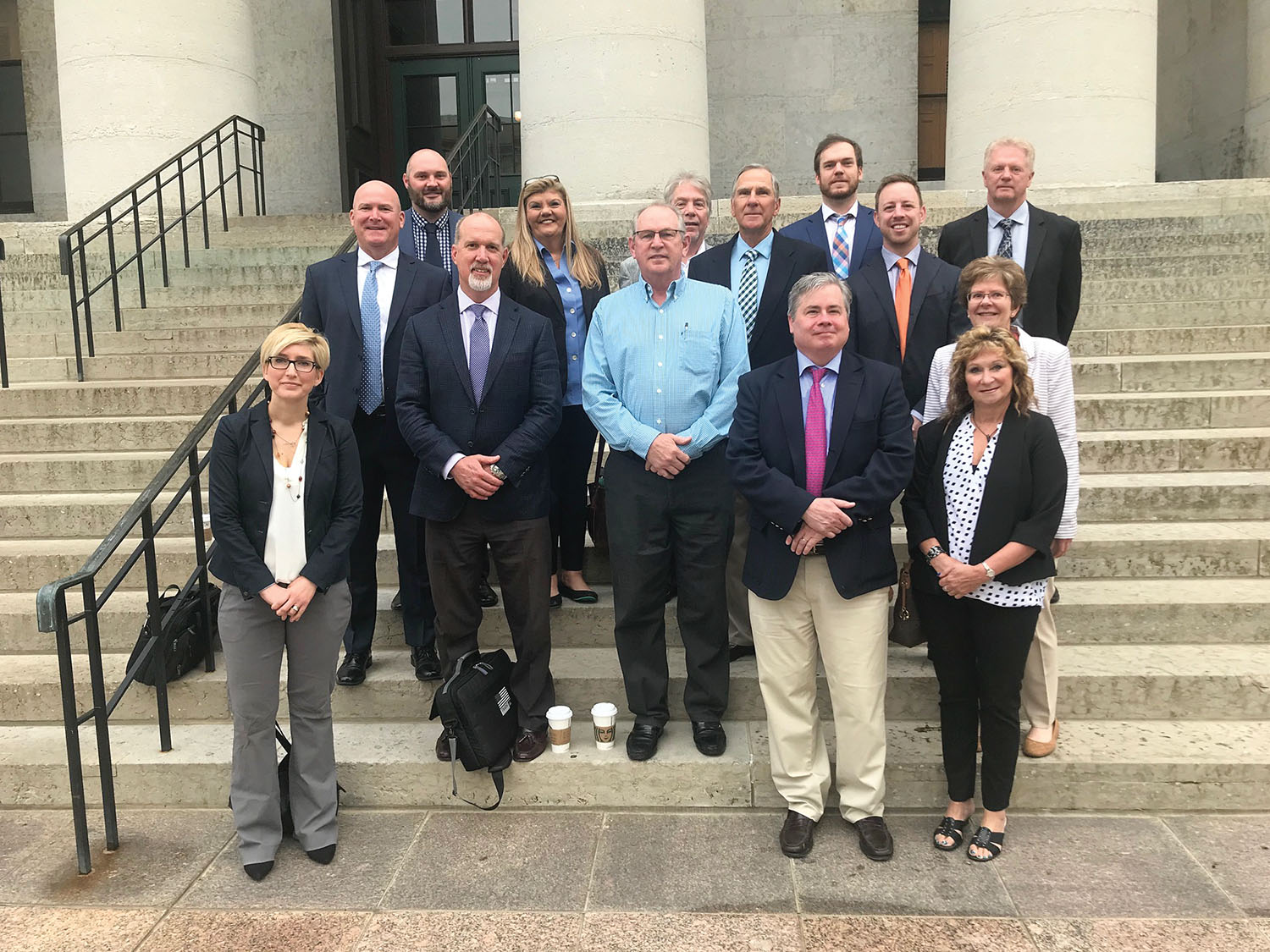On May 1, a group of various stakeholders from industry, trade associations, port authorities, metropolitan and rural planning organizations, and other Ohio River stakeholders met to form the Ohio River Coalition of Ohio (ORCO).
A signing ceremony was held at the Ohio Department of Transportation office in Columbus, where those in attendance executed a non-binding resolution to memorialize the formation of the coalition. In addition, the group created a mission statement and identified key issues related to commerce on the Ohio River.
On the same day, ORCO members met with Mark Locker, Scott Phinney and others from the Ohio DOT, and Matt Dietrich of the Ohio Rail Development Commission, to discuss the basis for the formation of ORCO, and to outline immediate and future goals and objectives.
Eric Thomas, general manager of Benchmark River & Rail Terminals, Cincinnati, and executive director of the Central Ohio River Business Association (CORBA), was elected chair of ORCO, and Penny Traina, executive director of the Columbiana County Port Authority, was elected vice chair.
Thomas and Traina are joined as co-founders of ORCO by 16 others representing various businesses, and public and private organizations including: James Rose, Cincinnati Barge & Rail Terminals and CORBA; Michael Paprocki, Brooke Hancock Jefferson Metropolitan Planning Commission; Scott James, Cincinnati Bulk Terminals and CORBA; Graham McClurg, Parsons Terminal; Bennett Cowie, Seaforth Mineral; Bill Dingus, Lawrence County Economic Development; Rusty Davis, S.H. Bell Company; Alyssa Pistininzi, S.H. Bell Company; Chip Muse, Wellsville Terminals; Bill Kinzeler, Running Rivers and CORBA; Donna Hrezo, Appalachian Partnership for Economic Growth; Jeannette Wierzbicki, Ohio Mid-Eastern Governments Association; Andy Kuhn, Southeastern Ohio Port Authority; Karen Pawloski, Buckeye Hills Regional Council; Bryce Custer, NAI Ohio River Corridor; and Larry Heck, Pier 48 Stevedoring.
ORCO’s first order of business was to meet with Ohio state representatives and officials. On May 2, the group hosted a Statehouse breakfast where they met with Ohio state representatives, including Doug Green (R-66th District), chair of the Transportation and Public Safety Committee, and Tim Ginter (R-5th District), as well as several other state representatives, senators and state officials to introduce the newly formed coalition, and to discuss the importance of the Ohio River waterways system. Also discussed were some of the issues and needs identified by the coalition the day before.
Ohio benefits from nearly 80 million tons of maritime cargo throughput, of which 45.4 million tons are from the Ohio River. That cargo has a total value of $11.5 billion, of which $8.7 billion, or 76 percent, is attributed to the Ohio River. There are approximately 188 terminals in the state of Ohio along the Ohio River, the majority of which are held in the private sector. The Ohio River system connects the state to a vast network of domestic and international shippers.
The Ohio River Coalition of Ohio (ORCO) advocates for commerce, job creation and economic development through the use of the Ohio River system as an integral part of Ohio’s freight transportation network.



